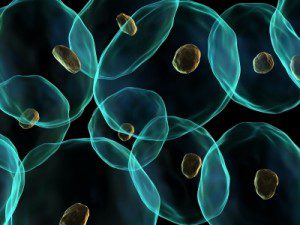The old adage “Out with the old and in with the new” could help prevent age-related diseases if applied to certain cells, new research on mice suggests.
By removing the body’s worn-out cells, called senescent cells, several times during the lifetime of aging-accelerated mice, researchers were able to spare the mice of cataracts, aging skin and muscle loss.
“We started treating animals when they were really young, before they started to establish these senescent cells,” study researcher Darren Baker, of the Mayo Clinic College of Medicine in Minnesota, told LiveScience. “As a cell became senescent we would remove it; we saw a really profound effect.”
Senescent cells
These cells were once important contributors to their cellular community. Eventually cells get old and start showing signs of wear and tear that could lead to cancer, so the body essentially “turns them off.” When cells get turned off in mammals (including humans and mice), they can take one of two paths, either dying off or sticking around in a senescent state.
For some reason, the ones that stick around start pumping out odd proteins. These chemical signals have a strange impact on the cells around them, and researchers have speculated that these chemicals can lead to age-related diseases.
The number of senescent cells increases as tissues age; at most they will make up 15 percent of cells in mammalian tissues, the researchers said.
Still, “that small percent is enough to cause major consequences,” Baker said. “They start to turn on a variety of genes that are not good and are thought to be detrimental to the overall function of the tissue.”
Out with the old
In the new study, the team bred mice to age quickly, getting cataracts, weakened muscles and loss of fat deposits by the time they are 10 months old, when they die of heart disease.
At the mice’s 3-week birthdays, the researchers treated them with a drug that would cause their senescent cells to commit suicide, and they repeated this treatment every three days. Compared with the untreated mice that kept all their senescent cells, these drug-treated mice had stronger muscles, fewer cataracts and less wrinkled skin (because their fat deposits in their skin were in better shape).
The researchers also let some of these mice grow up, and didn’t start treating them until they were 5 months old. At this point the mice had already developed aging diseases, including cataracts, and were suffering from muscle and fat loss. The scientists weren’t able to “undo” the aging that had already occurred, but after repeated treatment to remove the senescent cells, deterioration of the mouse muscles and fat cells stopped.
Healthy aging
The mice still had other age-related signs and didn’t have an extended lifetime; basically, the drug extended the proportion of “healthy time” in their lives. The researchers said they believe death (and these other aging diseases) is caused through different pathways that aren’t affected by these senescent cells.
They are repeating their study on normal mice, without the accelerated aging mutation, but these studies will take years to complete, because normal mice live so much longer (to about 3 years).
Since the study was performed using mice, the researchers still have a long way to go before they reach a human therapy. The senescent cell-clearing technique couldn’t be used on humans, since it would require inserting a special gene into human embryos, as was done with mice embryos.
However, Baker said the researchers could use the information they gather from these mouse studies to develop therapies for humans. Gene therapies could be used to target senescent cells, or scientists could use a vaccine to train the human immune system to attack these cells. Such therapies are far in the future, though, and still require lots of basic science to back them up.
The study was published today (Nov. 2) in the journal Nature.
You can follow LiveScience staff writer Jennifer Welsh on Twitter @microbelover. Follow LiveScience for the latest in science news and discoveries on Twitter @livescience and on Facebook.
Source – livescience.com

If you've ever found value in our articles, we'd greatly appreciate your support by purchasing Mindful Meditation Techniques for Kids - A Practical Guide for Adults to Empower Kids with the Gift of Inner Peace and Resilience for Life.
In the spirit of mindfulness, we encourage you to choose the paperback version. Delve into its pages away from screen glare and notifications, allowing yourself to fully immerse in the transformative practices within. The physical book enriches the learning process and serves as a tangible commitment to mindfulness, easily shared among family and friends.
Over the past few years, Wake Up World has faced significant online censorship, impacting our financial ability to stay online. Instead of soliciting donations, we're exploring win-win solutions with our readers to remain financially viable. Moving into book publishing, we hope to secure ongoing funds to continue our mission. With over 8,500 articles published in the past 13 years, we are committed to keeping our content free and accessible to everyone, without resorting to a paywall.







